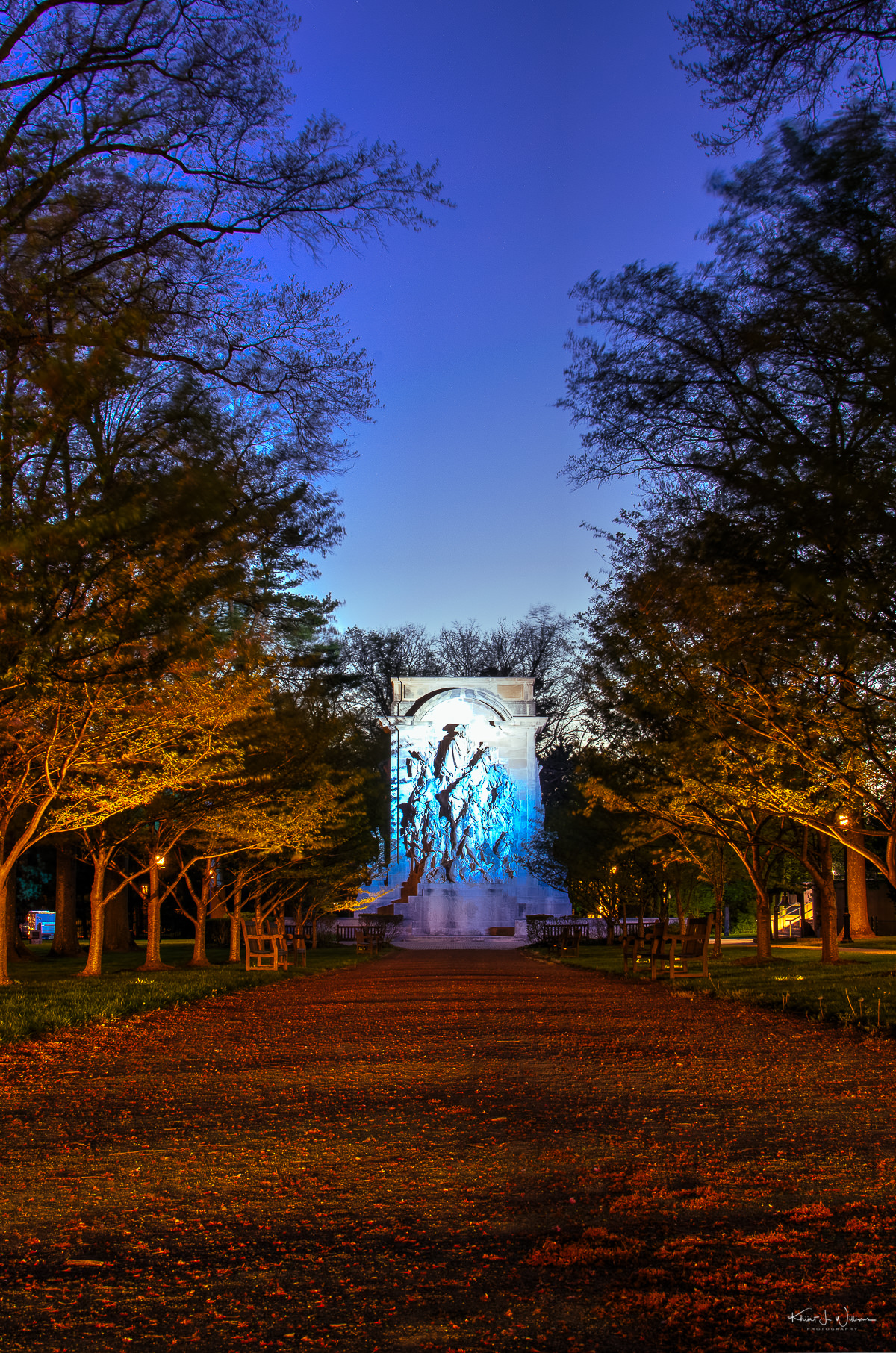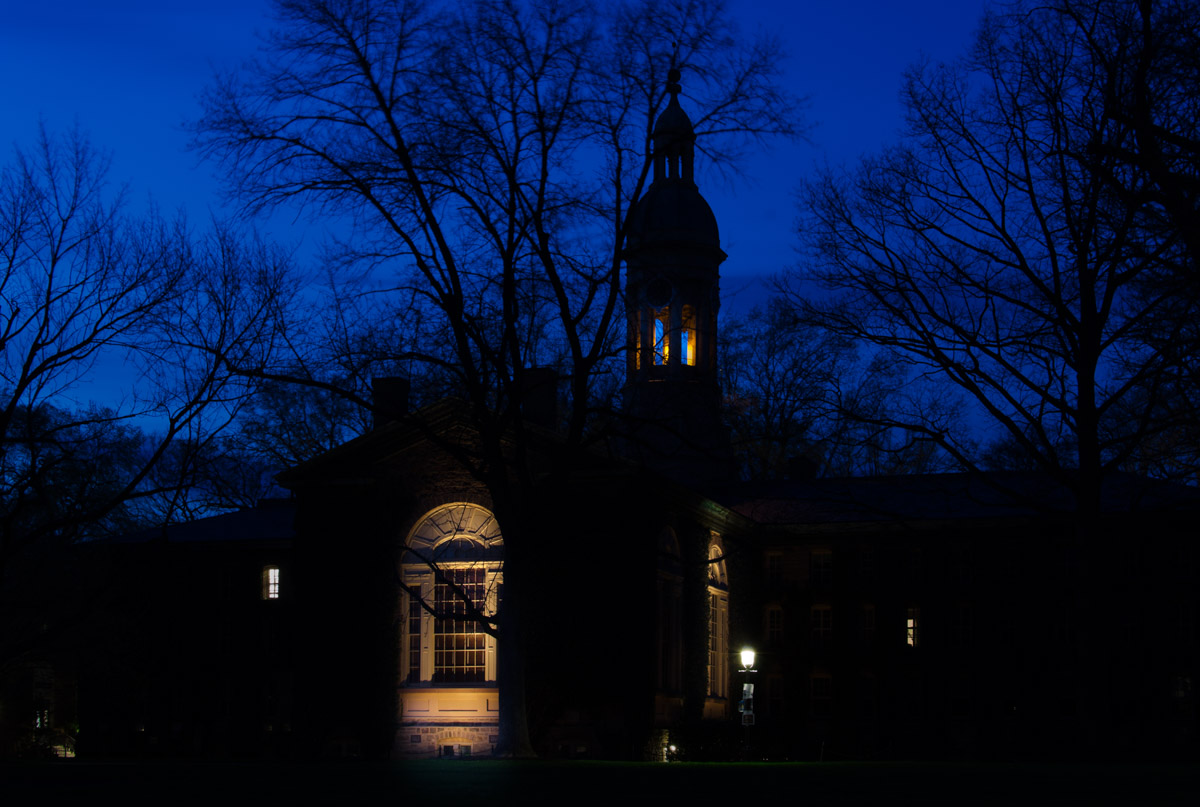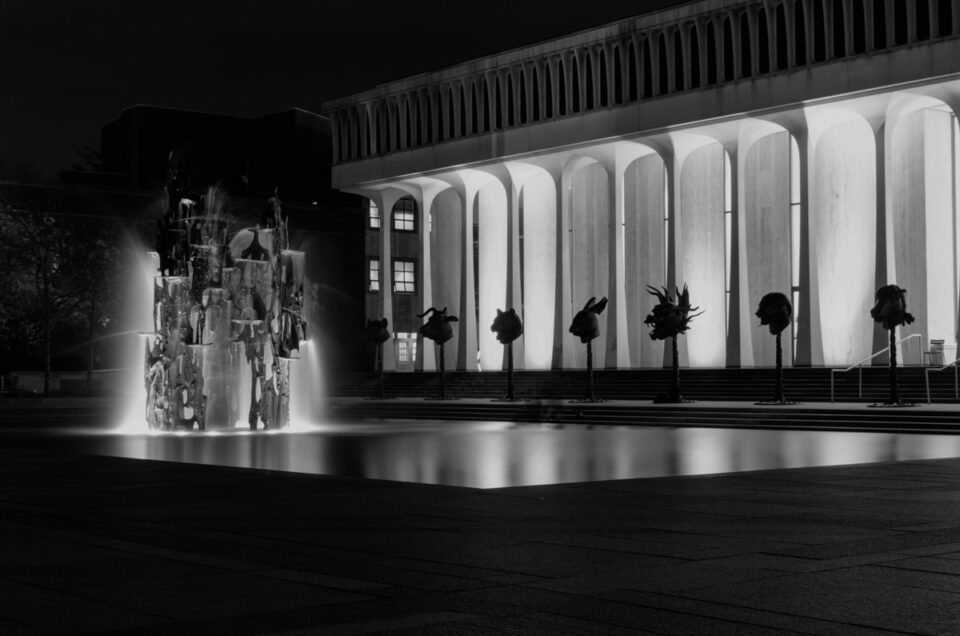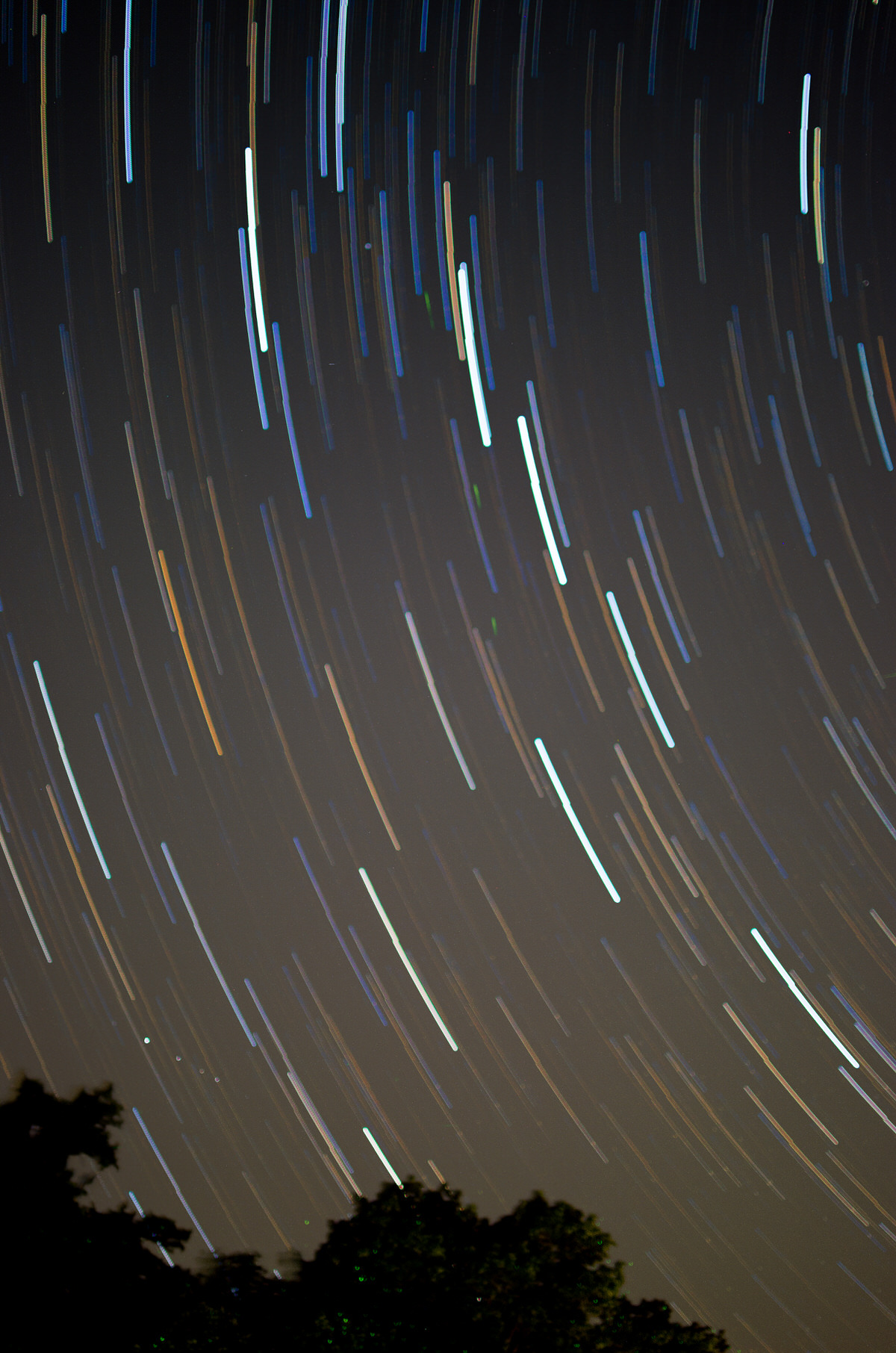Dedicated on June 9, 1922, the Princeton Battle Monument depicts General Washington leading his troops into the Battle of Princeton. Beaux-Arts sculptor Frederick MacMonnies designed the monument.
I'm learning a bit from the night and low light photography course with Rick Wright. Rick wanted the class to bring in 6-8 images for critique. He wanted us to show the images that we felt had worked out well and images that we felt were failures. I had only captured three photos since the last class, so I drove into Princeton on Wednesday night. I remembered that the Princeton Battle Monument was lit at night and decided to start there. I thought that perhaps the cherry trees would be lit as well—no such luck.
I decided to capture exposure bracketed images to create long exposure HDR images. The camera and tripod were set low and pointed down the path toward the monument. That way, I could get the trees, pathway, monument and some sky in the frame. However, this put the intersection of Nassau Street, Bayard Lane and Stockton Street right behind the camera. The light faded, the more the lights from the cars waiting at the light on Nassau Street affected the exposure. The challenge was getting proper middle exposure and shooting a set of 3-5 bracketed images.
It turns out the headlights were a blessing. The lights cast a warm orange-red glow on the path and the bottom of the trees. I'm not that happy with the sky, though. I was hoping for a richer blue.




